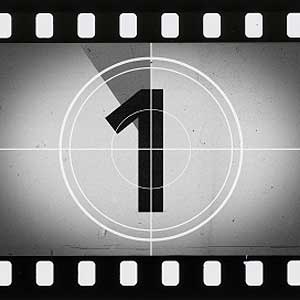October 7, 1955. A 29-year old poet named Allen Ginsberg takes to the stage at San Francisco’s Six Gallery and begins to read:
“I saw the best minds of my generation destroyed by madness, starving hysterical naked,
dragging themselves through the negro streets at dawn looking for an angry fix…”
The poem was “Howl,” now universally regarded as one of the great American literary works of the 20th century and a touchstone of the Beat movement. But Ginsberg’s creation was important for another reason — it spawned The People v. Ferlinghetti, one of the seminal obscenity cases in United States legal history.
All this and more is told in Howl, a movie opening theatrically in New York and San Francisco and nationally via video on demand on Sept. 24. Starring James Franco as Ginsberg, along with David Strathairn, Jon Hamm, Bob Balaban, Mary-Louise Parker and Jeff Daniels, the film not only recreates the creative process that produced Ginsberg’s epic poem, but dramatizes the trial that adjudicated its literary merits.

An occasional look at movies that matter.
The poem “Howl,” which essentially established the rant as an artistic form, is divided into three distinct parts: The first is a stream-of-consciousness riff about characters and situations drawn from Ginsberg’s personal experience; the second is a critique of industrial civilization, which Ginsberg refers to as “Moloch”; and the third is addressed to Carl Solomon, a man Ginsberg met when he briefly stayed at a psychiatric hospital. The language is layered, allusive, fierce. It is also highly explicit, with numerous references to drug usage and sex, both hetero and homo. In the film, Franco as Ginsberg is shown reading the work to an enthusiastic hipster crowd, and some of the poem’s sections are illustrated with creative animated sequences.
But the heart of the picture is the trial, which occurred in 1957 after customs officials seized copies of “Howl” that were imported from a London printer. The feds objected particularly to a line that glorified anal sex, and charged Lawrence Ferlinghetti, owner of City Lights Bookstore, “Howl’s” American publisher, with obscenity.
Using dialogue direct from the trial transcripts, the film gives voice to an interesting gallery of literary experts and legal minds. There are naysayers like smug English professor David Kirk (Jeff Daniels) who believed that Ginsberg and the Beats were total anarchists who should be done away with. Contrasting this sentiment are literary critics like Mark Schorer (Treat Williams) who testified the poem was an important indictment of “materialism, conformity and mechanization leading to war.”
Prosecuting attorney Ralph McIntosh (David Straithairn), who had a long history of pursuing obscenity cases, comes off as a man seriously befuddled by everything in the poem; he’s utterly out of his depth, and reads passages into the record as if they had been written in Klingon. And Federal Judge Clayton Horn (Bob Balaban), of whom the defense was wary because of his known conservative temperament, turns out to be open-minded and fair — he eventually ruled that “Howl” was “of redeeming social importance.”
Ultimately, Howl works on two levels: It’s a straight-ahead depiction of a key First Amendment trial, which helped open up American literature to new and more challenging work; and it is a love poem of sorts to the Beat movement — Ginsberg, Kerouac, Burroughs, et al — who challenged the rigid conventionality of the 1950s and created timeless pieces of art like “Howl.”
A documentary with the immediacy of a breaking news story, Budrus, opening in New York on Oct. 8 and Los Angeles on the 22nd, tells how a small Palestinian village used nonviolent action to stop the Israeli government from constructing a ‘separation barrier’ — part of the wall along the West Bank meant to protect Israel from terrorist incursions — that would have effectively destroyed the town and a good portion of its prime agricultural land.

Led by a savvy community organizer named Ayed Morrar, a man so politic he could unite Hamas and Fatah factions, the residents of Budrus began a 10-month series of protests to try and stop construction of the barrier. Eventually joined by international and Israeli peace activists, the demonstrations became national news and put increasing pressure on the Israeli government.
Director Julia Bacha smoothly integrates interviews, TV news footage and on-the-ground filmmaking to construct a compelling portrait of a popular movement that refuses to use violence to achieve its aims. In one sense, Budrus is a corrective to the conventional wisdom that all Palestinian resistance involves suicide bombings and rocket attacks. It also shows that there is a strong and committed Israeli peace movement that is determined to fight the extremes of right-wing nationalism and live in peace with its neighbors.
In the end, the Budrus protests forced the Israeli government to reconfigure a good deal of the separation barrier so that it did not pass through Palestinian territory. And even though slick on-camera Israeli military spokesman Doron Spielman tries to make it appear that the decision was purely political in nature, Bacha’s film makes it clear what happened: A populace united by a cause and using smart tactics compelled a militarized force to back down. Gandhi, Cèsar Chàvez and Martin Luther King Jr. would have been proud.





